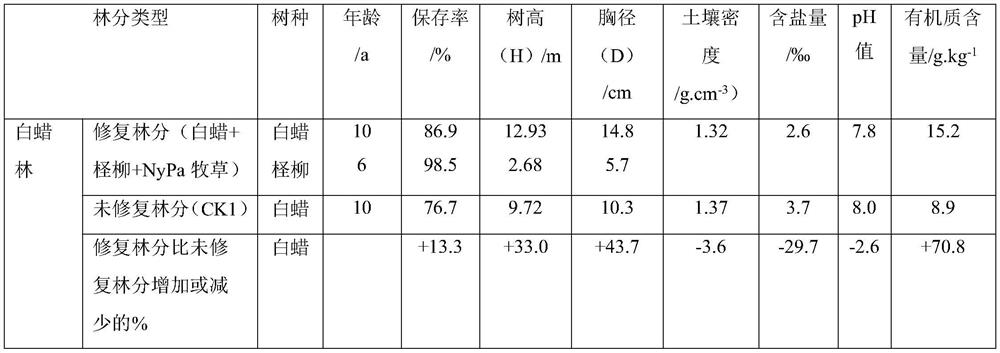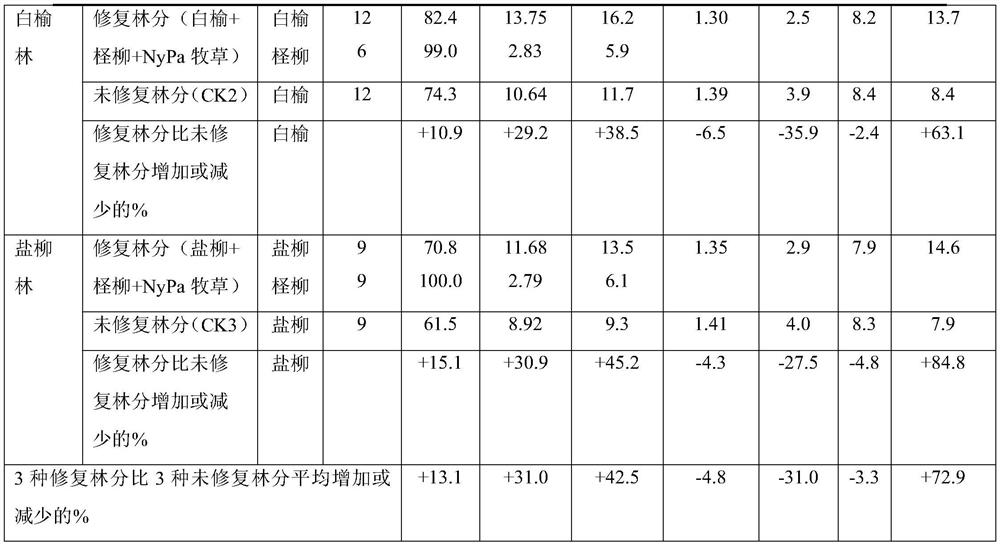An optimal allocation method of forest and grass for restoration of middle and young degraded shelterbelts in saline-alkali land
A technology for optimal allocation and shelterbelts, applied in the fields of site preparation methods, botany equipment and methods, agricultural machinery and implements, etc., can solve problems such as single restoration technology, difficult operation, and cumbersome procedures, so as to improve overall quality, reduce salt content, The effect of increasing soil fertility
- Summary
- Abstract
- Description
- Claims
- Application Information
AI Technical Summary
Problems solved by technology
Method used
Image
Examples
Embodiment
[0047] Attached table 1 is the restoration of three kinds of degraded forest stands caused by secondary salinization and low soil fertility in the Yellow River Delta Base of Dongying City, after applying the technology of the present invention and the stand growth and forest land without applying the technology of the present invention. Comparative test data of main indicators of soil physical and chemical characteristics.
[0048] It can be seen from the attached table 1 that, compared with the degraded forest stands without the application of the technology of the present invention, the three kinds of degraded forest stands restored by the technology of the present invention have significantly improved stand growth indexes and the physical and chemical properties of the forest land are significantly improved. Specifically, compared with their unrestored stands, the average tree preservation rate and average growth (average tree height and DBH) of the three tree species increa...
PUM
 Login to View More
Login to View More Abstract
Description
Claims
Application Information
 Login to View More
Login to View More - R&D
- Intellectual Property
- Life Sciences
- Materials
- Tech Scout
- Unparalleled Data Quality
- Higher Quality Content
- 60% Fewer Hallucinations
Browse by: Latest US Patents, China's latest patents, Technical Efficacy Thesaurus, Application Domain, Technology Topic, Popular Technical Reports.
© 2025 PatSnap. All rights reserved.Legal|Privacy policy|Modern Slavery Act Transparency Statement|Sitemap|About US| Contact US: help@patsnap.com


